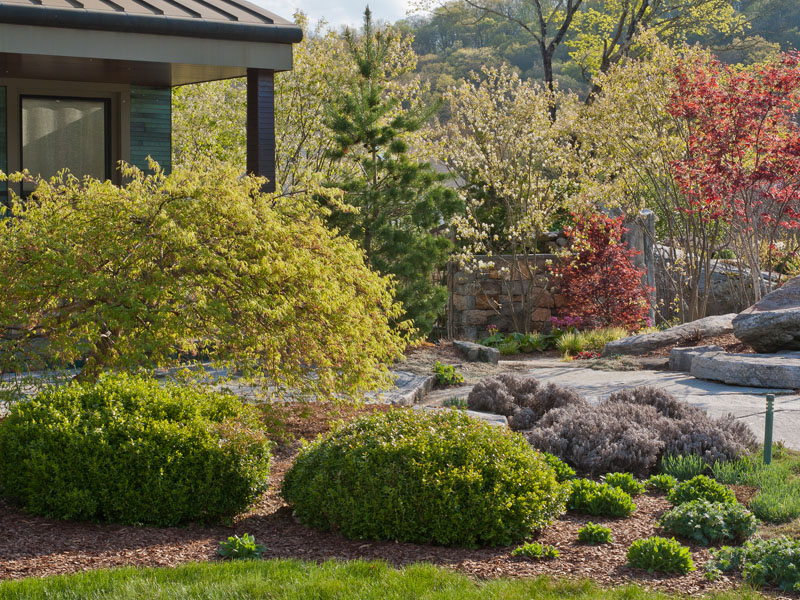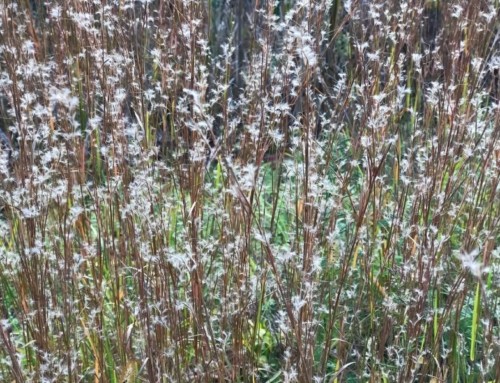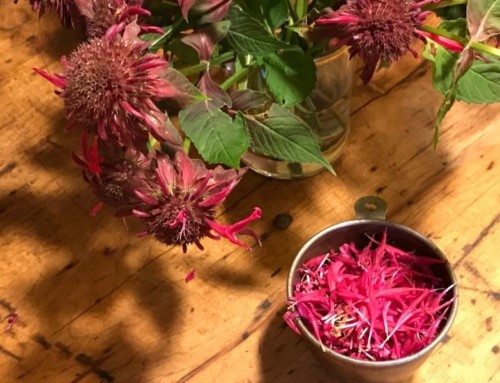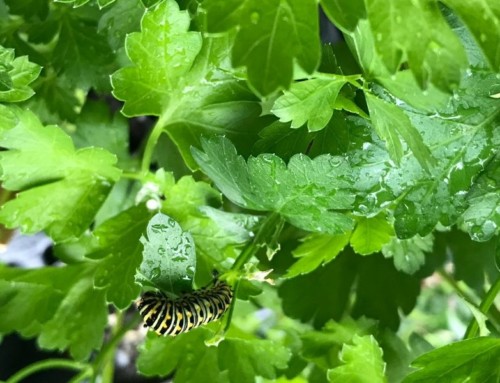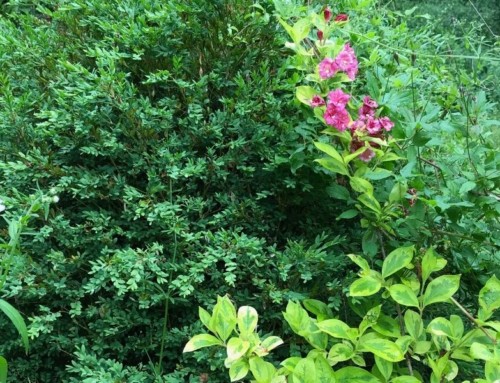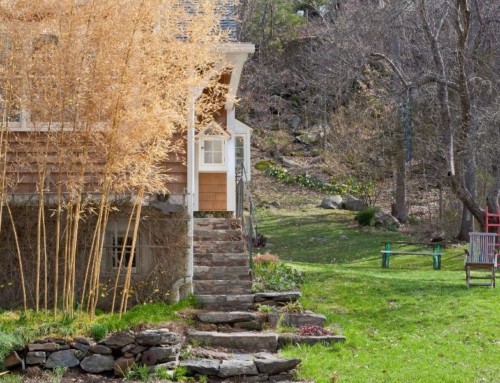Trees have a big, hopefully long-lasting presence in a landscape. They’re expensive to buy, hard work to plant (or move) and heartbreaking to lose if not suited to conditions.
And they grow, so you want to get the right plant in the right place the first time. Thoughtfully selected trees in a landscape by Ana Hajduk of Singing Brook Gardens, in the photo above, are maturing together beautifully.
Not an impulse purchase – unless you have lots of land, time and money.
I spend a lot of time considering site, size and characteristics before narrowing down the choices.
And a lot of time with clients, figuring out whether too-big trees blocking a view, scratching cars in the driveway or crashing into the house (or each other) can be limbed up, selectively thinned, reduced – or, like the half-dead evergreens moping about, should get what arborists call “basal pruning”.
Sometimes I know exactly what will work – Ana and I joke that a grove of shadblows (Amelanchier) is the solution to almost every problem.
But often it requires finding the overlap between multiple internet searches to turn a hunch into the right decision. All the relevant information is not in one place, and even reputable sites contradict each other.
One client on Rt. 7 in Kent, CT wanted to block views from the road with plants. I compared separate search results for small and medium-sized hardy trees and shrubs tolerant of alkaline soil, shade (big shallow-rooted maples), salt (a big factor next to a major road) and water runoff.
Magnolias, witch hazels, spicebush and, for a tall shade tree where water drained onto the property, a sycamore, appeared in all the search results and turned out just right. But it sure did take a lot of research. I wished I had one book to underline, bookmark and cross-check my hunches.
The almost-ultimate doorstop of a reference book has just landed on my desk.
Michael Dirr and Keith Warren’s The Tree Book: Superior Selections for Landscapes, Streetscapes and Gardens (Timber Press 2019) draws on the authors’ long careers in horticultural education, plant research and breeding, commercial tree production – and their unwavering love of trees.
I say “almost” because it doesn’t seem to focus much on deer resistance or wildlife value beyond berries for birds. You’ll have to go to The Native Plant Finder or just search to determine larval food sources and pollinator preferences. But the book is 3″ thick – I haven’t read it all yet!
Choosing just the right tree means asking a lot of questions beyond – but definitely including – appearance. This book answers questions I didn’t even think to ask.
It’s an invaluable guide, whether you want the big picture on a genus or need to pin down the exact cultivar to fit a space, resist a pest or disease, solve a landscape problem or hit just the perfect aesthetic note.
So many trees to fall in love with, but only so many places to put them. Read on for starter questions and things the nursery tags don’t tell you.
THINK ABOUT THESE BEFORE BUYING A TREE
- What is the purpose? Why do I want a tree in this spot?
- What size should it be – now and in the future?
- How fast does it grow?
- Does it fit the space? Will it hit wires or crash into the house someday?
- What shape? Tall and skinny, roundish or broadly spreading, sculptural? Vase-shaped?
- Formal setting or informal?
- Shade tree or small accent? Understory or canopy?
- What’s your situation? Wide open or forested? Lots of paving? Lawn everywhere?
- Specimen all by itself or to be integrated into existing plantings?
- Evergreen or deciduous?
- Who does it feed?
- Is it invasive? Will it seed all over the place or drop unwanted fruits?
- Is it dioecious? If so, you’ll need two – a male and a female if you expect fruit. If flowers are the main attraction, such as with Virginia fringe trees, male blossoms will be showier.
- Where will I see it from? Up close? Framing a view? Through a window? As I turn into the driveway? From far away?
- Will it withstand wind on an open site?
- Is it deer candy?
- What kind of soil does it prefer and what is your soil like? Fertile and full of organic matter? Well-drained? Saturated? Clay? Infertile and sandy? Shallow or deep? Acidic or alkaline? Full of rocks or ledges?
- Sun or shade? Light shade or deep and dark?
- Maintenance needs?
- Salt tolerance if near the shore or a road
- Do I want a flowering tree?
- One with colored foliage, berries or interesting bark for winter interest?
- What quality of light passing through leaves- delicate open and airy or dense?
- What tree truly makes my heart go pitter patter?
- Once decided, can I find it? Is it the right time of year to plant it?
The Tree Book addresses these concerns and more. It’s a hefty, useful book with a hefty $79.95 list price. Well worth it if you buy trees or want to learn a lot about them. Ask your local library to purchase a copy if it’s more than you want to invest.
STARTING SMALL
Are you going to plant the tree yourself, with a helper or have professionals do it? Make sure it’s a size you can handle. Small trees are cheaper and recover from transplant shock faster, often overtaking larger trees planted at the same time.
Tulip trees and oaks shooting up in my gardens remind me that it would all return to forest in short order without my intervention. Squirrels and blue jays forgot acorns they buried in my gardens, outdoor containers, growing flats and propagation beds.
It’s surprising how fast an oak will grow from an acorn. Give it a try.
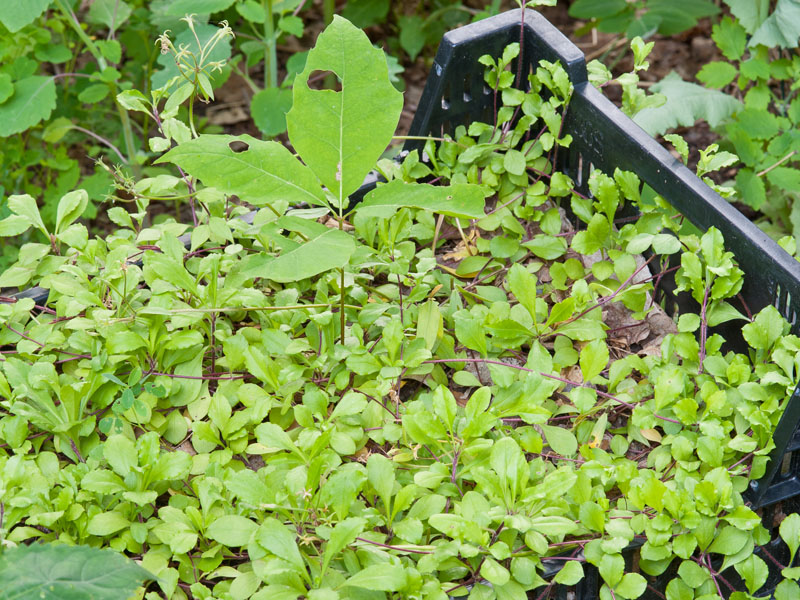
Oak seedling planted in a flat of Phlox stolonifera by a squirrel or bluejay
